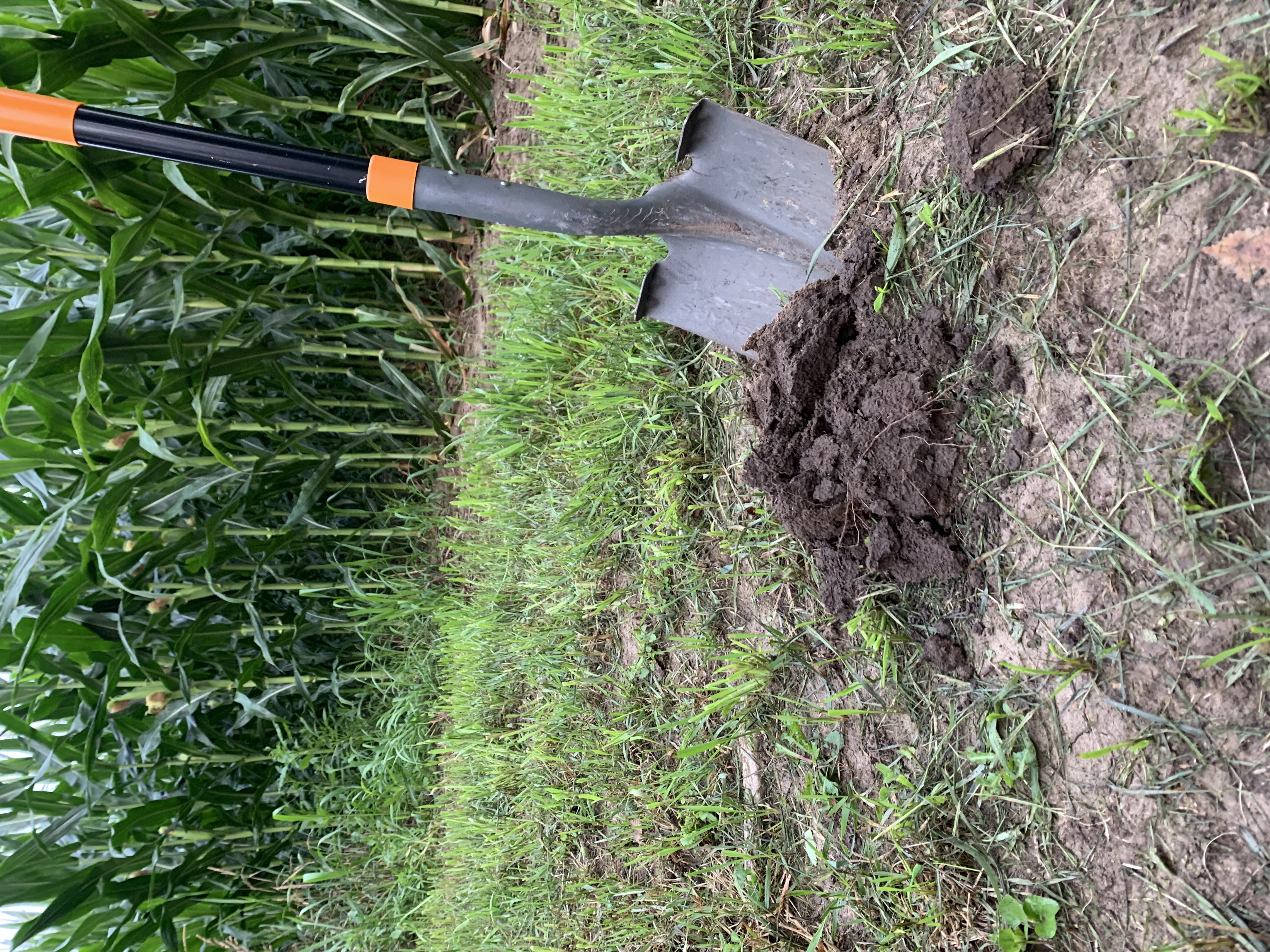It’s easy to look around at all the life on Owl Acres—the trees, the birds, the rabbits and moles, the deer, the grass, the flowers, and everything else–and think “wow, what abundance, what mystery, what wonders.” It’s a little more challenging for me to remember that there’s an entire universe on a different scale right beneath my feet. I give it a negative name—dirt. I don’t think of it as soil, and I try to keep it out of the house. I don’t think much about the reality that its full of life, either. In fact, I’m not sure I want to think about that since the names I have for soil-dwellers include fungus, mold, bacteria, virus,–all things I was well taught to think of as bad. To do justice to the life on Owl Acres, though, I have to consider this Lilliputian realm where the scales and the life forms are so different from our above-ground world. Let’s call it soil instead of dirt, and let’s see what’s down there.
Imagine that you are a tiny creature living beneath the surface of the ground. You would be living in a three-dimensional labyrinth of giant boulders (grains of sand), rocks the size of gravel (silt) and clumps of fine bits of rock (clay) held together by the products of life. Between the boulders and the rocks and the clumps are spaces (called pores) where you can move around. They are filled with air so you can breathe, but if it floods, these pores fill up with free-flowing water and you may have to find a path to move up or down so you can breathe. When it’s not flooding, water forms streams and rivers through the porous areas. Some of the rocks have films of water clinging to them where tiny creatures dwell. Some are dry. Some of these spaces are big enough for you to crawl into, and others are too small for you, but big enough for some of your smaller neighbors. And some tunnels are gigantic, made by huge machine-like creatures that eat their way through your world. Everywhere are thin fibers sent out by the fungi,
and in the top layers of your world plant roots crowd and tangle.
The sand, silt and clay were all once part of the earth’s mountains and bedrock. Over billions of years., the mountains weathered and eroded, breaking cliffs into rocks, rocks into sand, sand into silt, and silt into clay. The soil on Owl Acres started out as ground up rock, but over millions of years, the biological world evolved, and added living and decaying organisms to the mix. Rain washed through it, dissolving some of the minerals from the rocks. Ecosystems evolved to live in this environment. Prairie grasses sent their roots deep into the soil. Surface animals dug burrows and moved material from the surface into the soil. Fires swept across the prairie leaving ash to be worked into the soil. Fungi wove the finest of threads through the roots. Some organisms digested organic materials, recycling nutrients. Some were prey. Some were predators. They all lived in a complex and dynamic food web. And they all contributed one way or another to the chemistry of the soil.
Who, or what, are these soil-dwellers? We’ve looked at earthworms and chipmunks. For thousands of years, people have observed these commonplace soil disrupters. But what animal or plant is affected when we dig a hole to set a fence post? Who or what cares when the soil is turned over by the plow? Over the next few weeks, we’ll explore the life that flourishes beneath our feet on Owl Acres. It’s a strange, exotic and fascinating world, and we couldn’t live without it.
Photo by Author. Alt text: A spade has turned a scoop of dirt next to a cornfield
